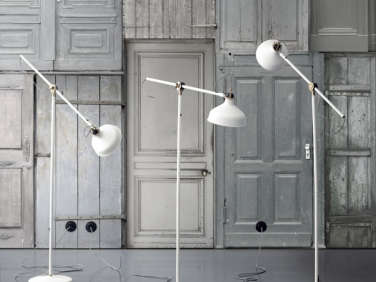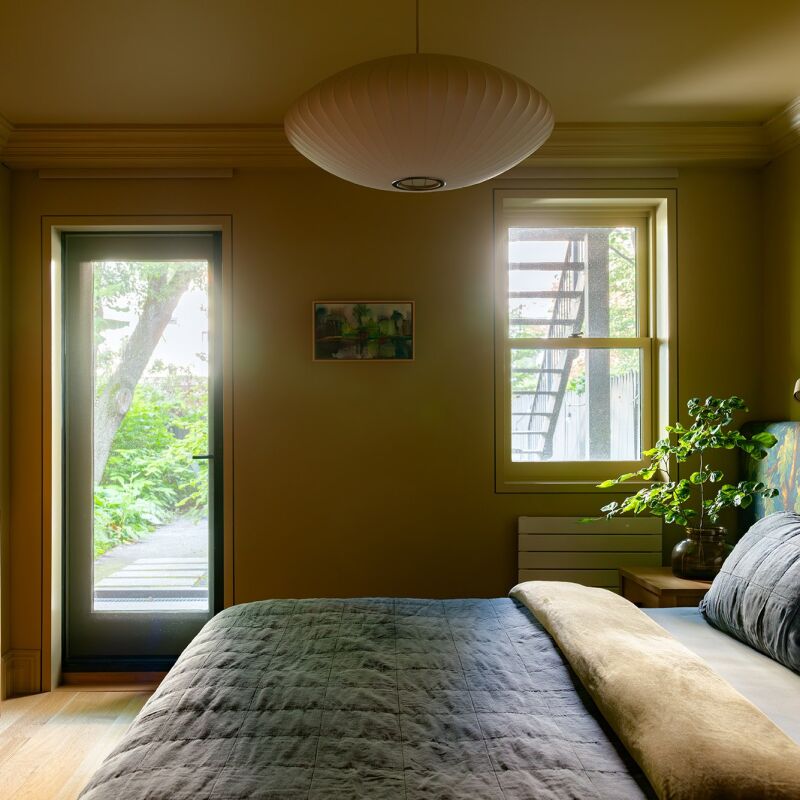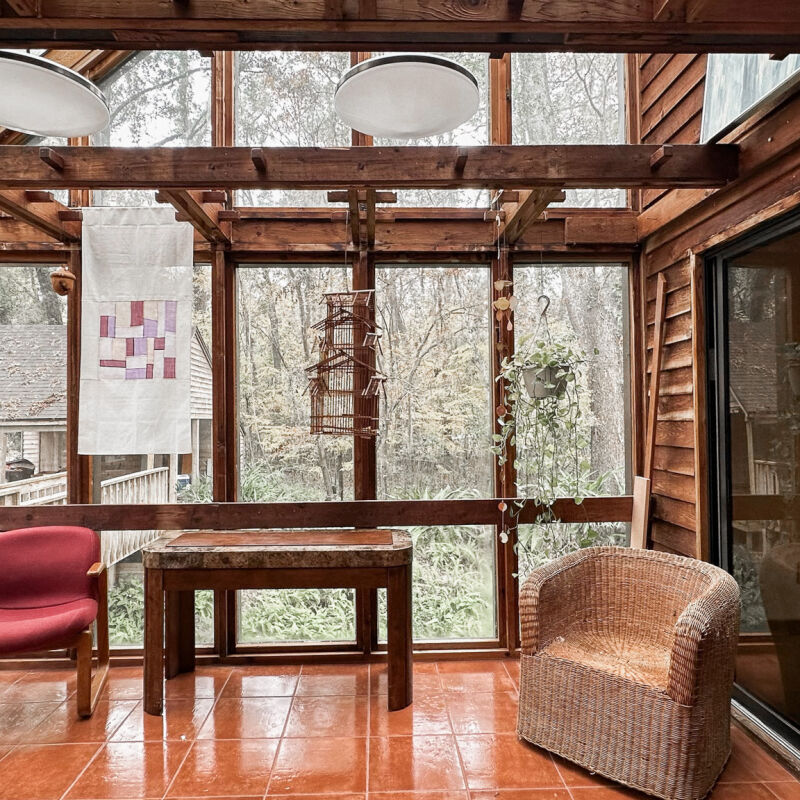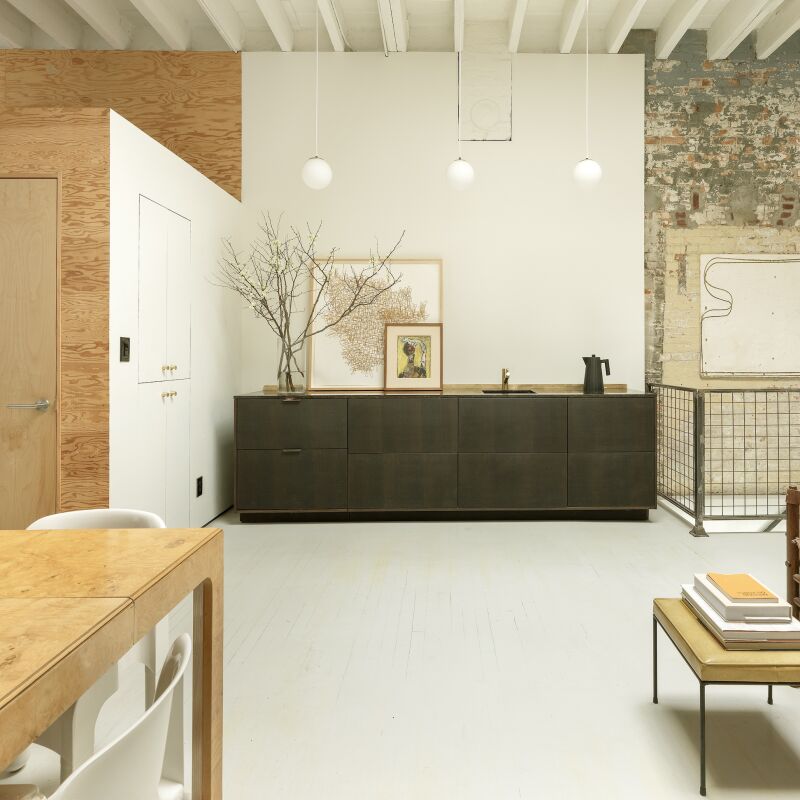I love vintage treasure hunts, especially if it’s a local estate sale curated by our friend Roy Dudley. He has 20 years of antiques dealing and appraisal experience, and it never fails–I usually end up walking out with an object or two.
This time around, it was all about a gilded settee (the rest of the crowd ignored it). It was ugly–very ugly–but for some reason it called out to me. I was attracted to the shape, the size, the proportions. Unfortunately, my husband wasn’t interested.
That evening I went on an online search for reupholstered French-style settees, and Brandon’s interest was piqued. I reminded him that we had a bolt of vintage ticking fabric (we bought ten years ago) from a weekend estate sale in Copenhagen stored in our closet (are you sensing a pattern?).
The next day I left a $300 bid on the settee, and a week later Dudley called to declare me the winner. Here’s how we transformed the outdated piece into something new and fresh looking.
Before

Above: The French gilded settee was upholstered in a glam 1950s fabric. My husband’s job was to remove the fabric and the brass nailheads, a tedious job that pays off in upholstery savings. To our surprise, we discovered that the settee was stuffed with horsehair and the springs were hand-tied in leather, which means it could date back to as early as the 1850s.
After

Above: Here’s the settee in its new incarnation. Once we removed the gilding, we decided to leave the wood bare in its natural state.

Above: Our upholsterer was very precise and detail-oriented when she laid out the fabric. She had to join two pieces of fabric, and the seam is flawless, considering the fabric is striped (which makes it more difficult to work with). Note the double-pipe blue linen trim.

Above: The back is upholstered in the same solid blue fabric as the double piping.

Above: The vintage ticking fabric we used was handwoven on a loom (originally pillow covers shown above), hence its characterful imperfections.
Above: The settee now resides in our library, with a Ranarp reading light from Ikea.
See more Before & After posts:
- The $350 DIY Kitchen Overhaul in Two Weekends
- A Cool and Confident Kitchen in LA by Project M+
- A Galley Kitchen Reinvented
- A London Victorian Transformed






Have a Question or Comment About This Post?
Join the conversation (12)